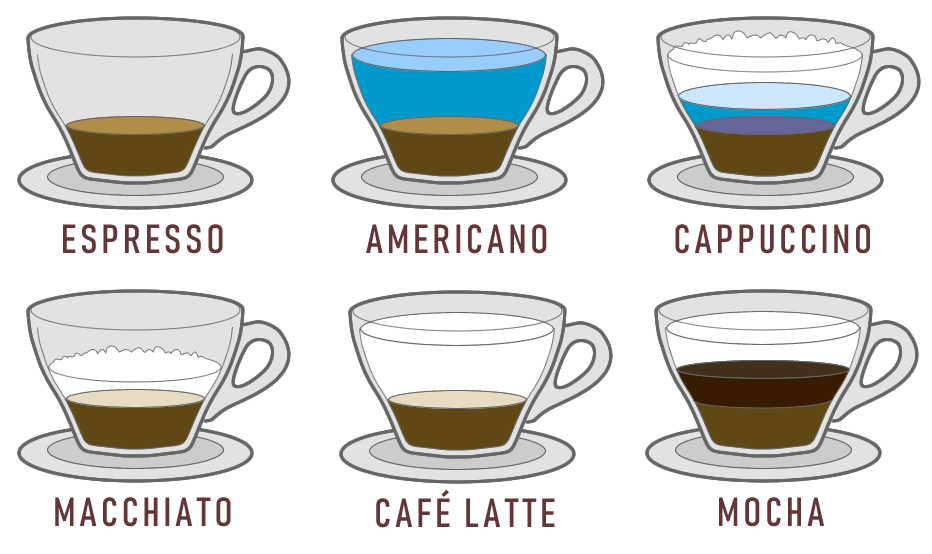Coffee, tea and hot chocolate come in a multitude of tastes and sizes, so it’s important to understand a little about how it’s made when choosing the best solution for your workplace.
Here’s Coffee Sense’s quick guide to hot drinks:
Roasting coffee beans
Coffee beans are naturally green – soft, spongy to the bite and smelling grassy – but can be stored in this state without losing any quality or taste.
Roasting is the heat process that turns coffee beans to the aromatic, delicious dark brown we know and love. Beans are rapidly heated to very high temperatures, which causes chemical changes to take place then, as they reach their peak of perfection, quickly cooled to stop the process. Expert roasters ‘read’ the beans and make decisions with split-second timing; a perfectly roasted batch can become ruined within seconds!
The cooled beans weigh less, because moisture has been roasted out, are crunchy to the bite and smell like coffee; they’re ready to be ground and brewed.
Beans are therefore quickly sealed in bags, pods or pouches to preserve their flavour before it diminishes.
Darkening your roasts
Roasts can vary massively, and personal choice is sometimes influenced by national preference or geographic location. The longer the bean is roasted, the darker it gets, and with prolonged roasting oil starts to break through the bean surface. Contrary to popular myth, lighter roasts actually have a higher concentration of caffeine.
Roasts generally fall into four categories:
| LIGHT | MEDIUM | MEDIUM-DARK | DARK |
| Light brown colour, generally preferred for milder coffee varieties. No oil. | Medium brown colour with a stronger flavour. Still non-oily. | Rich, dark colour, with a slight bittersweet taste. Some oil on surface,. | Shiny, dark to charred beans with pronounced bitterness. Darker roasts reduce coffee acidity. |
Types of coffee
Espresso-based coffees share three common ingredients: espresso, steamed milk and cream; although some coffees add extra toppings, like chocolate on a cappuccino.
The main differences are the proportions of espresso, steamed milk and foam within the drink, and the order in which they’re applied:

Espresso is a single, usually 30ml, shot of espresso in a cup; otherwise known as a ‘short black’. Doppio is a double shot i.e. double espresso. Ristrettos are espressos with half the amount of water, for a more concentrated and darker espresso.
Macchiato is an espresso topped with steamed milk and foam to mellow the harsh taste. Short and long macchiatos refer to single or double shots respectively. Baristas strive for three layers: the bottom dark espresso layer, the middle espresso mixed with milk, and top predominantly steamed milk layer. But different baristas will vary proportions of each, to different effect.
Americano is predominantly (two thirds of a cup) hot water, with an espresso extracted on top, to create a lighter, larger cup of coffee.
Café Latte is an espresso-based drink with steamed milk and micro-foam added, creating a much sweeter, larger cup of coffee. Piccolo latte is a latte made in an espresso cup, creating a very strong but mellowed down espresso.
Cappuccino is very similar to latte, but with more foam placed on top, and sometimes sprinkled with chocolate.
Flat White is espresso with just steamed milk poured on top; a foam-less latte.
Mocha is like hot chocolate mixed with a cappuccino, created by putting chocolate powder or syrup with an espresso shot then adding steamed milk and micro-foam.
Teas
Infusion is the process of soaking tea leaves or herbs in liquid, so in the context of tea means achieving a desired taste and aroma by dissolving a certain proportion of tea materials in water.
This can result in typically between 3 and 8 grammes of tea leaves into a 150ml cup of hot water.
The sheer variety of bags, pouches, pods and capsules make it much easier to get the mix right.
Hot chocolate
Hot chocolate is typically 50g of chocolate, mainly plain chocolate, recommended 70%+ cocoa, but you can mix with milk chocolate, to a 200ml mug of warm milk – optionally with 75ml of cream and with cinnamon sprinkled.
Ready-made mixes help do this for you.
Getting heat right
Coffee is best served at between 70°C and 80°C (155°F – 175°F), though most prefer it towards the upper end – or even slightly hotter!
Black tea requires boiling 100°C, but more delicate herbal or green teas require slightly lower temperatures to avoid damaging leaves and creating a bitter taste.
It is for this reason many machines automatically adjust to optimum drinks temperatures, or have a ‘temperature boost’ function specifically for teas.
Helping you choose
We’ve scoured to market to find the best combinations of machines and drinks, for the smallest home office to busiest workplace, and will work with you to find the best solution for you – honestly priced, no strings attached, and only us (no finance companies!) to deal with.